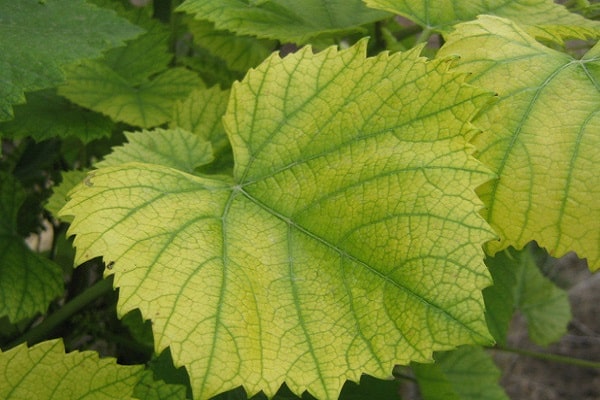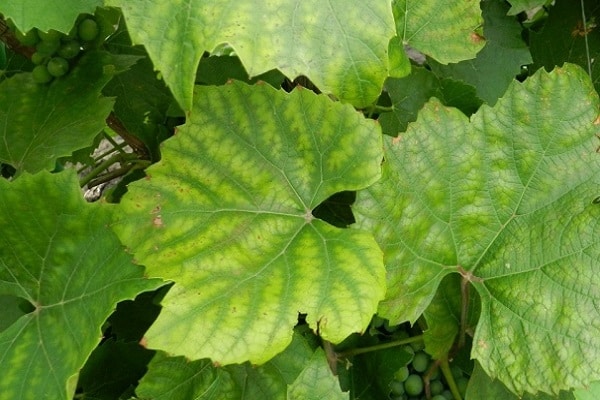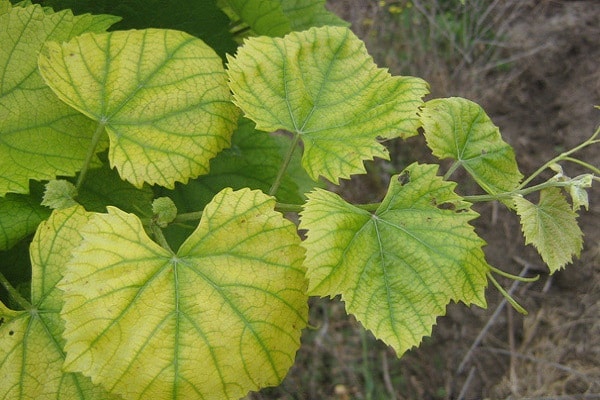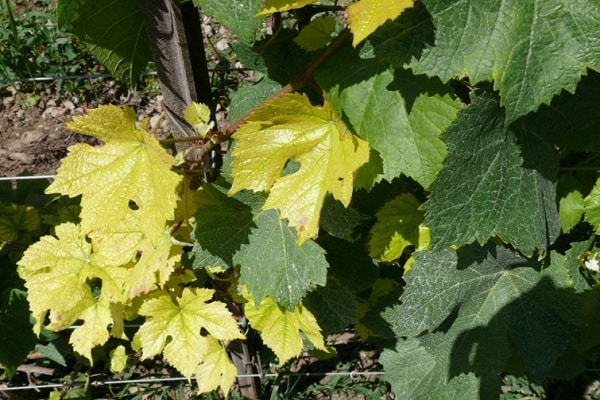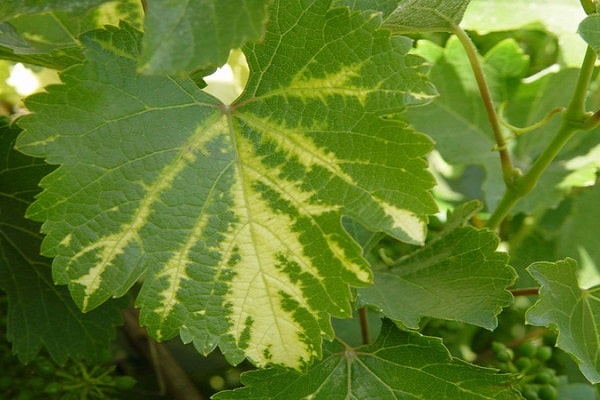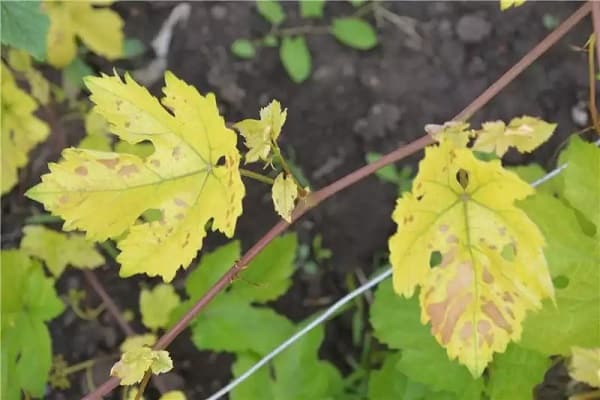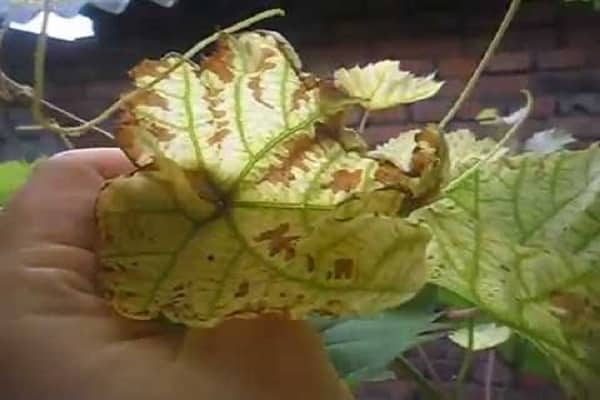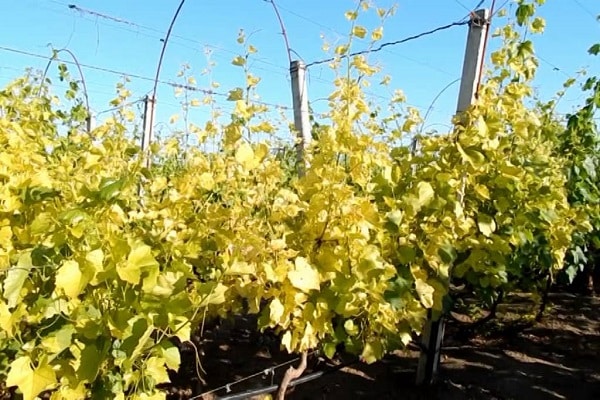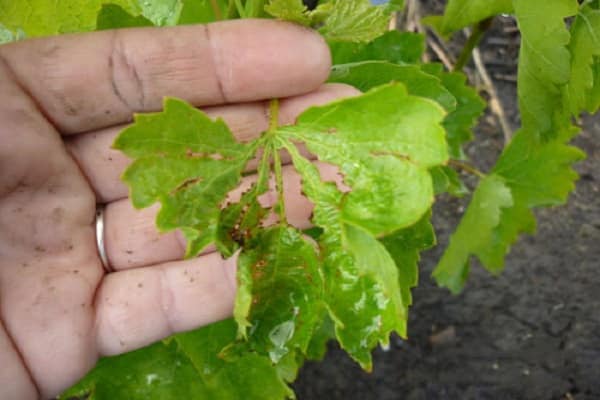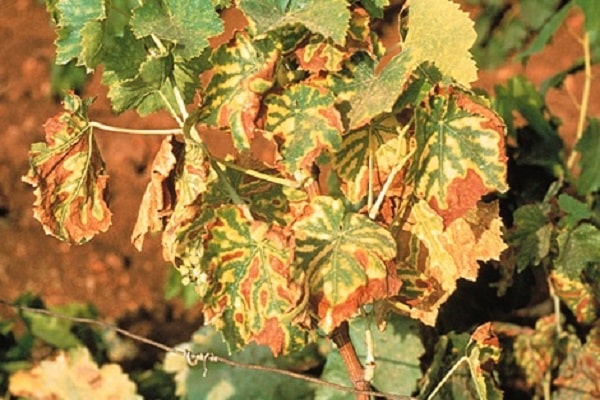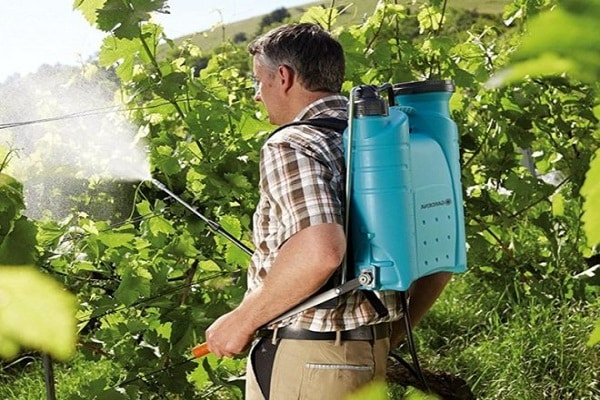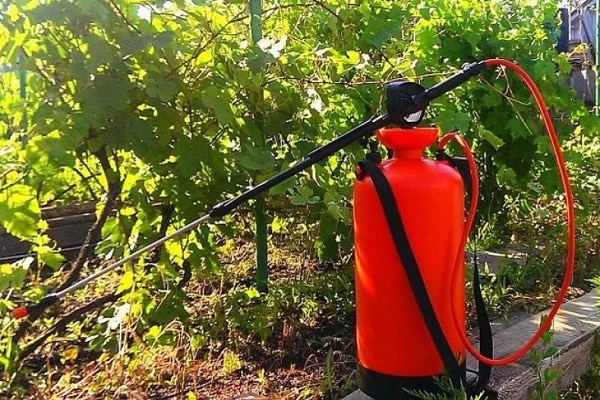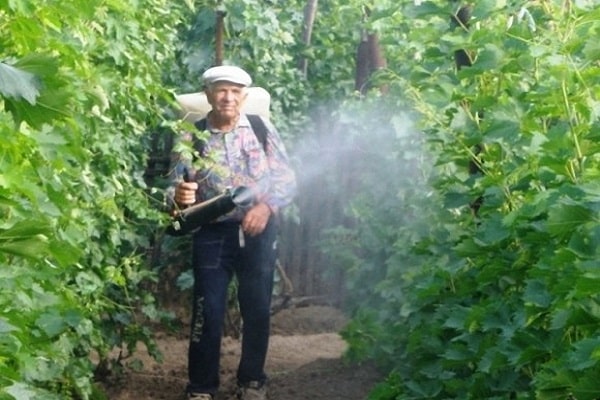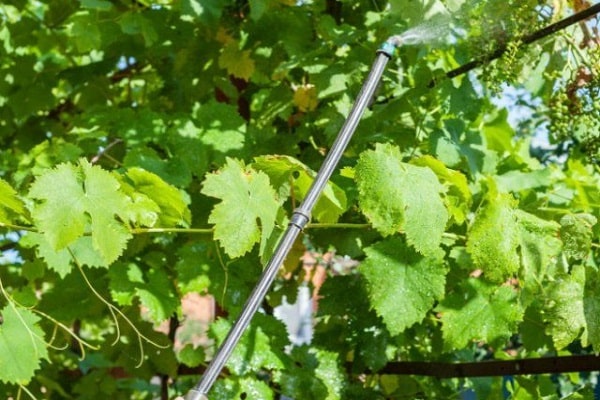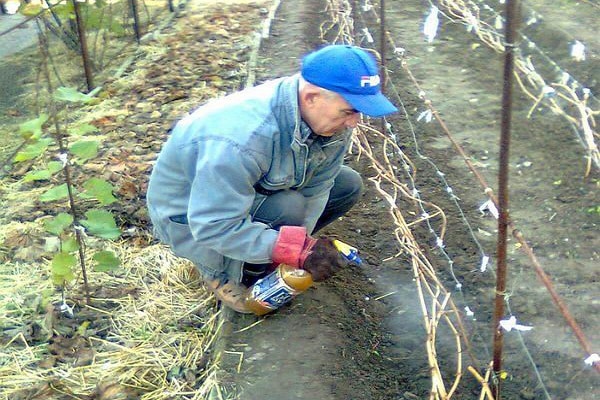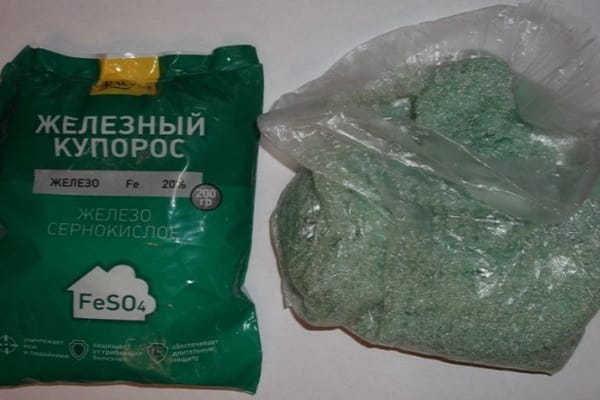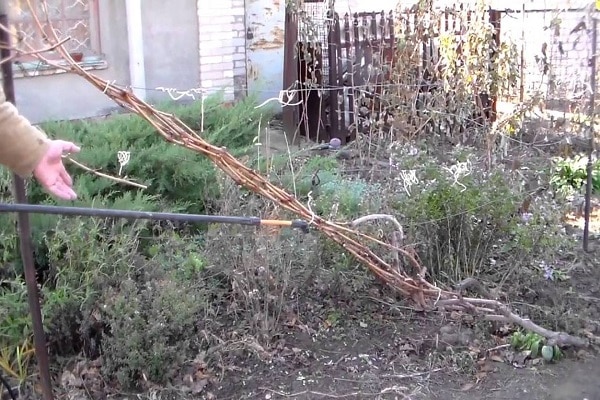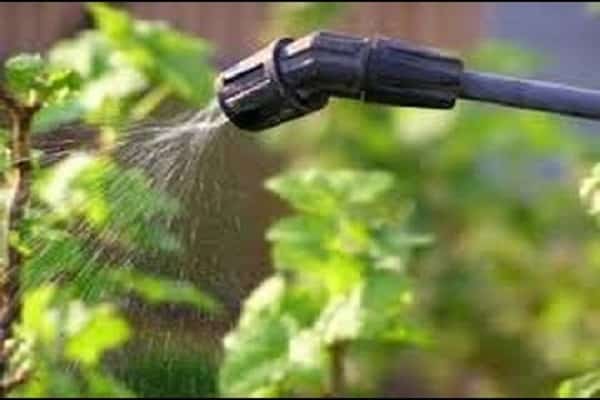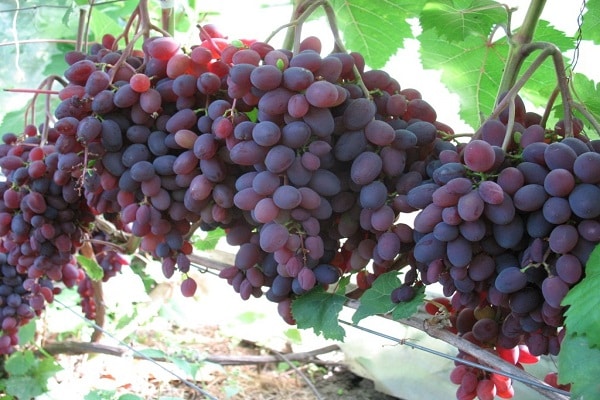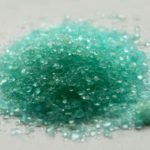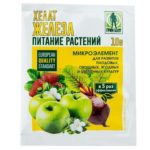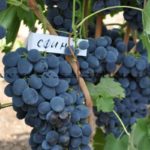Grape crops of different varieties may be resistant to fungal or infectious diseases. Lack of nutrients in the soil, sunny days, high humidity, and fungal infections cause grape chlorosis. It can be infectious or non-infectious, and the way to combat the malaise of the fruit crop depends on the cause of its occurrence.
- What is chlorosis
- Why is it dangerous?
- Types of disease
- Non-infectious
- How to distinguish non-infectious chlorosis from infectious
- Infectious
- Edaphic
- Carbonate
- Causes and signs of the disease
- Methods to combat chlorosis
- Using iron sulfate to treat grapes
- How to prepare ferrous sulfate solution
- Autumn treatment with iron sulfate
- Prevention
- Resistant varieties
What is chlorosis
Chlorosis of grape leaves manifests itself in the loss of chlorophyll - the leaves become translucent, discolored or turn yellow. This phenomenon is caused by a decrease in plant photosynthesis. The lemon-yellow tint in this plant disease is characteristic of both the foliage and the vine.
Why is it dangerous?
When selecting seedlings of grape varieties that have weak immunity to yellow mosaic and common fungal and viral diseases, even non-infectious chlorosis may cause the death of the entire bush.
For disease-resistant shoots, severe chlorosis threatens:
- discoloration or change in leaf color;
- drying of the tops of the shoots;
- lack of fruits.
For your information! With repeated treatments of plants with chemical compositions with a high content of microelements, the yield of plants affected by grape chlorosis will be lost or reduced due to crushing of the berries and their shedding.
Types of disease
Purely schematically, chlorosis can be divided into three types:
- non-infectious, caused by iron deficiency;
- infectious, it is provoked by the yellow mosaic virus;
- edaphic, related to soil quality.
There are several more subtypes of chlorosis due to the different chemical composition of the soils on which grape seedlings are planted and the climatic conditions of the regions where the vines grow.
Non-infectious
Non-infectious chlorosis is not associated with pathogens; it is caused by external unfavorable factors:
- increased soil moisture;
- prolonged rains, high levels of precipitation;
- imbalance in the chemical (mineral) composition of the soil.
Non-infectious chlorosis of grapes is diagnosed by the initial stage of change in leaf color.The first yellowness appears at the edges, gradually spreading to the veins; they are the last to lose their initial color.
Types of non-infectious chlorosis:
- nitric;
- iron;
- carbonate;
- magnesium;
- sulfuric.
How to distinguish non-infectious chlorosis from infectious
To diagnose non-infectious chlorosis, iron chelate is used as a tester. It is applied to the affected leaf in a strip. A change in color within 24 hours—the return of a green color to the area treated with the composition—indicates that the form of the disease is non-infectious.
Infectious
Infectious chlorosis develops against the background of a viral disease. Most often this is a yellow mosaic, panache, variegated leaves, but other fungal infections of the vine can lead to chlorosis.
The change in leaf color in the infectious form of the grape bush disease begins with the veins (in the direction from small to large). The last areas to turn yellow or discolor are those furthest from the veins. The leaves of old shoots are the first to undergo infectious chlorosis, and gradually the disease spreads to young ones.
During the flowering period of grapes on infected plants, the color of the leaves is restored. The shape and size of the berries and clusters, accordingly, differ from those characteristic of a healthy plant of this variety.
Infectious chlorosis of grape vines cannot be treated. An infected vineyard must be destroyed. Seedlings after grafting are at high risk.
For your information! Grape varieties growing in the European part, which do not have a rootstock, are not susceptible to infectious chlorosis.
Edaphic
A bush disease caused by unfavorable conditions associated with the soil - excessive moisture, lack of minerals and other useful substances, blocking them from the roots of seedlings by dense layers of soil is called edaphic chlorosis.
Excess lime in the soil is associated with a lack of iron, which causes the same symptoms of plant disease. The carbonate type of chlorosis also belongs to the edaphic category.
Reference! Edaphos - soil (translated from Greek). Edaphic - relating to the soil, generated by it or conditioned by its influence.
Carbonate
The carbonate form of the disease is often called iron chlorosis; a deficiency of the element Fe causes the disease. Red-fruited varieties are more susceptible to this subtype of non-infectious damage. For their high-quality fruiting, easily digestible forms of iron are required.
Excessive soil carbonate content is caused by natural factors:
- soil alkalization;
- close to the surface of the aquifer;
- high salt content;
- mixing the humus layer with others;
- density.
All these factors contribute to imbalance of mineral nutrition, redox regime and water-air balance.
An imbalance of mineral substances supplied to plants is most often observed in humus soils and carbonate soils formed during the destruction of calcareous rocks and marls.
There is enough iron in these soils, but lime blocks the movement of zinc, boron, and manganese ions towards the plant root system. Nutrients remain inaccessible.
Causes and signs of the disease
Iron chlorosis can be diagnosed by the depletion of the vine and shoots, which is caused by the deficiency of one or more nutrients.
The following symptoms are characteristic of bromine deficiency:
- Spots with a low chlorophyll content simultaneously appear on the entire surface of the leaf.
- The leaf cloves dry out and crumble.
- Flowers fall without opening.
- Necrotic plaques appear on the berries,
- The fruits do not reach normal sizes.
Zinc deficiency manifests itself in insufficient development of petioles and leaf blades. The leaves of the upper shoots are covered with light green spots. Loose, light soils of the carbonate type are predominantly characterized by a lack of zinc.
Manganese deficiency is diagnosed by the beginning of yellowing of the leaves from the serrated outer part, while the leaf areas adjacent to the veins remain green.
The most common nitrogen deficiency for the development of vineyards is observed on all types of soil during prolonged rains, which wash away the useful element from the soil. This is a seasonal phenomenon. When planting vines in light sandy soils, nitrogen starvation of shoots is caused by the following reasons:
- Consistently cold days during the growing season of the plant.
- Excessive mulching with straw or sawdust.
- Lack of moisture means a prolonged dry period.
Magnesium deficiency is observed in grapes growing on sandy and acidic soils, which is caused by excess bromine, potassium, and sodium content. These chemical elements block magnesium ions, preventing them from reaching the plant roots.
The rarest of chloroses is sulfur. It most often affects vineyards planted in areas with low levels of organic nutrients. Phosphorus-nitrogen fertilizers used in excess of recommended standards cause chlorosis.
Methods to combat chlorosis
Annual feeding is necessary for the vineyard. Every professional winegrower knows how to treat chlorosis before its first manifestations based on a visual analysis of the soil. To prevent diseases associated with a lack of nutrients, root feeding is used, carried out in the spring before flowering, and foliar feeding, which is carried out in the fall.
Fertilizers to increase nitrogen levels:
- Urea is added in liquid form and is easily absorbed. As the main root feeding, it is applied in the spring. In autumn, the vines are sprayed with a liquid urea solution after harvesting.
- Ammonium nitrate - ammonium nitrate is completely dissolved in water, saturates the soil with easily digestible nitrogen. In the spring it is applied as a root dressing, in the fall as a foliar fertilizer.
- Ammonium sulfate is recommended for application to soil with a high degree of moisture. This drug is practically not washed out of the soil by melt and rainwater.
Superphosphates increase the level of phosphorus in soils:
- Simple is intended for all types of soil. The fertilizer contains gypsum, a source of sulfur.
- Double is a concentrated product, its dosage in solution is three times less than a simple one.
To increase potassium levels, the following are suitable:
- Potassium chloride. The exception is acidic soils.
- Potassium salt. High content of chlorine-containing substances. Used only in late autumn.
- Potassium sulfate shows the highest efficiency indicators when enriching light soils.
Combined fertilizers for saturating the soil with nitrogen, phosphorus, potassium:
- "Nitrophoska".
- "Nitroammophos".
- "Azofoska".
What to do with a vine affected by chlorosis if the disease is detected after the flowering period? The answer to this question is ambiguous.If the disease is caused by an infection, then the leaves and vines should be treated with fungicides.
Universal in the fight against yellow mosaic, anthracnose, mildew and oidium are:
- Bordeaux mixture.
- Inkstone.
- Colloidal sulfur.
- Lime-sulfur infusion.
The use of these products is recommended when the first signs of chlorosis are detected; they are applied to the entire surface of the bush - the vine, leaves. The plot of land adjacent to the grape bush is also sprayed with them.
The drugs for non-infectious chlorosis are the same as those recommended for preventive treatment, only the dosage of active substances in the solution is greater. The fight against this type of chlorosis will be intense - from early spring to the middle of the growing season. This is the only way to save the vineyard from destruction and return its yield to the next season. This season, unfortunately, it will not be possible to get a full harvest.
Using iron sulfate to treat grapes
Insecticide, fungicide - iron sulfate does not pose a danger to plants, animals, and humans. Iron sulfate, ferrous sulfate (FeSO4), is used for disinfection, treatment of plants and as a fertilizer. It effectively fights chlorosis of a non-infectious nature, but is practically useless in the infectious form of the disease.
For each particular case of plant damage, there are recommendations on how to prepare the composition for treatment in order to avoid burns of foliage and shoots. The versatility of the drug lies in the fact that it is used for:
- preventive seasonal treatment;
- in the fight against insect pests and their larvae;
- treatment of fungal infections;
- accelerating the healing of standard damage;
- enrichment of soil with iron;
- storage processing.
Ferrous sulfate has several disadvantages. They are expressed as follows:
- When treating plants in spring, young leaves and shoots can receive not only help in the fight against chlorosis and pests, but also burns.
- The product does not penetrate deeply into the tissue; the fight against fungal infections is carried out superficially.
- The disinfecting effect lasts no more than 14 days, which means that in the summer, shoots affected by the fungus should be treated at intervals of 10-14 days.
Advice on how treat grapes with iron sulfate in spring:
- The first therapeutic and prophylactic spraying is carried out in the period between the onset of stable positive temperatures until the leaves appear.
- The concentration of the fertilizing agent is less (10-20 g per 10 liters of water); accordingly, the period of treatment increases from the moment the snow melts until 4-5 leaves appear on the shoot. Processing is carried out in calm, dry weather.
- A 0.5% solution is added to the soil by digging. Recommended dosage: 100 g for every 1 m2.
How to prepare ferrous sulfate solution
To obtain a solution with a strength of 0.5%, you need to dissolve 50 g of concentrated fertilizer crystals in 10 liters of water. The drug must be dissolved in cold water heated in the sun. If this rule is followed, the characteristics of the fertilizer will not deteriorate, and a cold shower will not be a shock for the plant. The grapes do not tolerate cold watering.
Note: With severe iron deficiency, which has caused grape chlorosis, the concentration of ferrous sulfate solution also increases to 0.5%.
The composition prepared in this proportion can be used for spraying, which will protect the grapes from infection by diseases of nearby fruit trees and their parasites.
Autumn treatment with iron sulfate
On the eve of winter, grape bushes are also treated with iron sulfate. This is a necessary measure of protection against cold weather and temperature changes. A high concentration of iron sulfate ensures reliable coverage of the plant with a protective film that prevents not only freezing of the bush, but also the penetration of pests and fungi into it.
After the growing season until mid-November, spraying is carried out with a solution made in the proportion of 500 g of fertilizer per 10 liters of water. This is the norm for an adult plant.
For seedlings, the fertilizer rate is reduced to 300 g FeSO4. The same solution that is prepared for treating the grapevine is used to treat the adjacent plot of land.
Attention! Before autumn spraying, pruning and removal of remaining foliage on the branches is carried out. This increases the efficiency of processing each branch.
Prevention
Preventive work to restore grape bushes affected by chlorosis in the previous season:
- While the buds are dormant, the bushes are sprayed with copper sulfate or Bordeaux mixture. Root feeding - mineral fertilizers.
- After the buds open, empty shoots are removed and nitrogen-containing compounds are added.
- At the stage of shoot development, treatment is carried out with a weak solution of Bordeaux mixture and lime sulfur with foliar feeding with mineral fertilizers.
- At the stage of ovary formation, spraying with solutions of colloidal sulfur and copper sulfate is carried out.
- The next treatment, repeating the previous one, will occur only after harvesting and thinning the bushes.
Protecting a vineyard in which a plot of carbonate soil is allocated begins with the selection of seedlings that can withstand the complexity of the soil.
For your information. Parsley cannot be tolerated by grape pests; this is the most favorable neighborhood.
Resistant varieties
Breeders are constantly improving the quality of the vine, using different combinations of rootstocks and scions, but no one has yet succeeded in achieving 100% resistance to chlorosis. Today the following varieties are highly resistant to the disease:
- Alexa;
- Venus;
- Delight;
- Zaporozhye raisin;
- Pink Timur;
- Talisman Oriental;
To minimize the risk of grapes being damaged by chlorosis, you should take a comprehensive approach to plant protection, without neglecting any of the stages of spring and autumn spraying and fertilizing.

